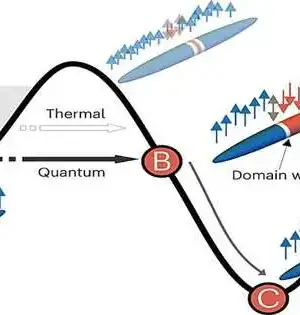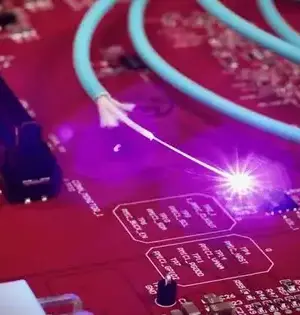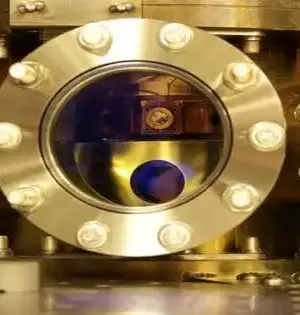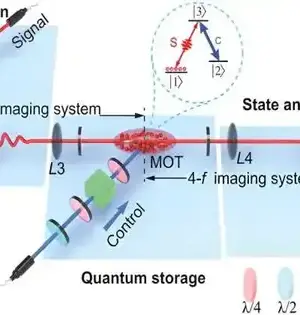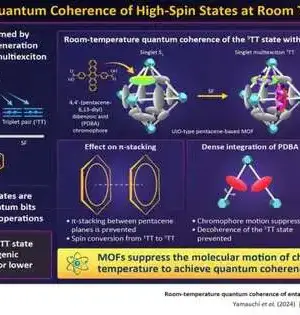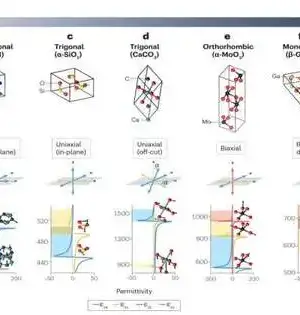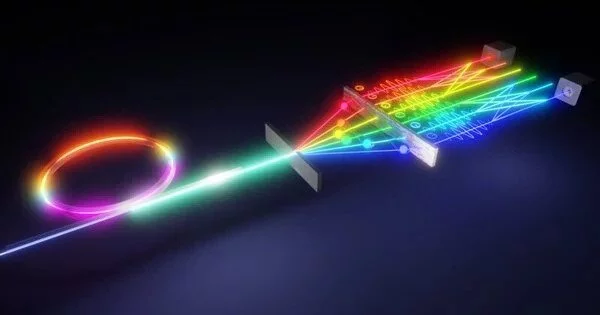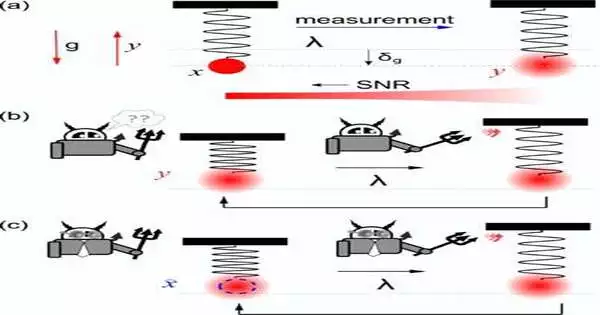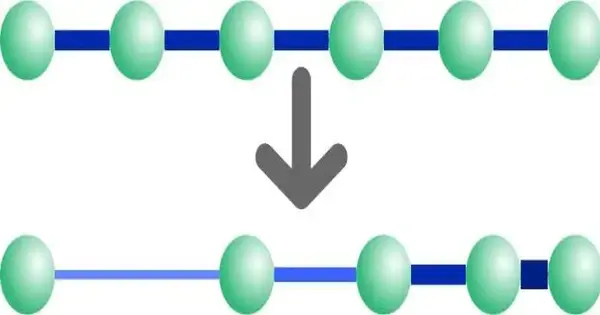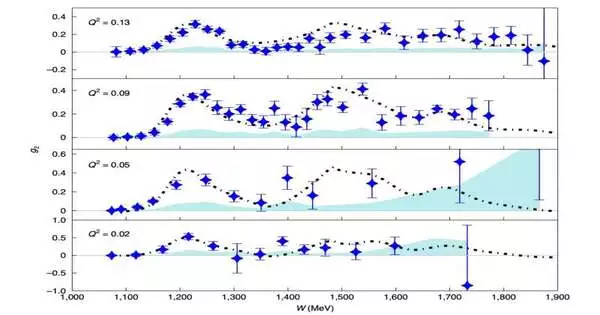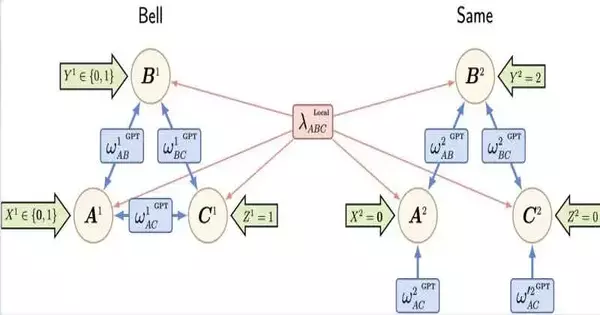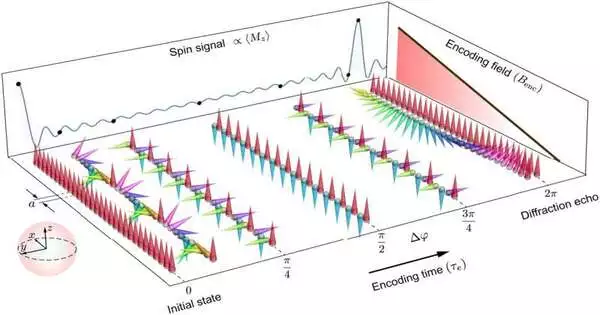Hybrid materials have served a variety of functions in the advancement of modern technology. Despite numerous studies on hybrid materials, the reported properties and characteristics are still insufficient. This is due to the fact that synthetic methods influence hybrid material properties and behavior, so even minor changes can have a significant impact. Scientists discovered that at chemical compositions near the structural quantum critical point in the crystalline solid Ba1-xSrxAl2O4, a highly disordered atomic arrangement forms in the AlO4 network, resulting in both crystalline and amorphous properties. This hybrid state is easily created by uniformly mixing raw materials and heating them.
Quantum Physics
Quantum technology and research are creating a slew of new opportunities and possibilities. One of these possibilities involves communication speed, prompting experts to consider whether quantum communication is faster than the speed of light. The key to maximizing traditional or quantum computing speeds lies in our ability to understand how electrons behave in solids, and a collaboration between the University of Michigan and the University of Regensburg captured electron movement in attoseconds - the fastest speed yet. Seeing electrons move in one quintillionth of a second increments could help push processing speeds up to a billion times faster than what
A multi-institutional team has developed an effective method for measuring high-dimensional qudits encoded in quantum frequency combs, a type of photon source, on a single optical chip using existing experimental and computational resources. Although the word "qudit" may appear to be a misspelling, this lesser-known cousin of the qubit, or quantum bit, can carry more information and is more resistant to noise – both of which are important qualities required to improve the performance of quantum networks, quantum key distribution systems, and, eventually, the quantum internet. Because of superposition, which is a phenomenon that allows multiple quantum states to exist
A novel method of combining two materials with unique electrical properties – a monolayer superconductor and a topological insulator – provides the best platform to date for studying topological superconductivity. The combination could serve as the foundation for topological quantum computers that are more stable than traditional quantum computers. Superconductors, which are used in powerful magnets, digital circuits, and imaging devices, allow electric current to pass through without resistance, whereas topological insulators are thin films only a few atoms thick that restrict electron movement to their edges, resulting in unique properties. In a paper published in the journal Nature Materials,
An excess of foundation commotion is normally enough to upset work. However, physicists have developed a miniature size motor made of a glass dot that can withstand the distracting impact of clamor while still running effectively.Their trial is accounted for in the diary's "Actual Survey Letters" and was chosen by the diary as an exploration feature. In our regular daily existence, we knew about motors and engines that consumed fuel to move in a coordinated manner and consequently perform valuable work. However, things are more complicated in the microcosm, where any amount of commotion can easily derail things. "Heat causes
Research driven by the College of Amsterdam has shown that subtle radiation coming from dark openings can be concentrated by imitating it in the lab. Dark openings are the most bizarre objects known to mankind, packing so much mass into so little space that nothing — not even light — can escape their gravitational pull once it gets close enough. Understanding dark openings is critical to disentangling the most central regulations overseeing the universe, since they address the restrictions of two of the best-tested speculations of material science: the hypothesis of general relativity, which portrays gravity as coming about because
Quantum chromodynamics is an area of study that investigates areas of strength for the between quarks intervened by gluons. Quarks are rudimentary particles with an electric charge that are the building blocks of composite particles, like hadrons and protons. A few parts of the areas of strength in the quantum chromodynamics system are still inadequately perceived, especially with regards to connections at low energies and with low energy moves. One hypothesis that makes forecasts about nucleonic summed-up polarizabilities (i.e., key amounts depicting the nucleon's reaction to an outer field in quantum chromodynamics) is the chiral-burden hypothesis. Chiral balance is a
The quantum hypothesis predicts the presence of supposed three-sided snared states, where three quantum particles are connected in a manner that has no partner in old-style material science. Hypothetical physicists may be interested in determining how well new hypotheses, as opposed to quantum hypotheses, can replicate the behavior of these states. The work of John Clauser, Alain Angle, and Anton Zeilinger, whose work was as of late perceived by the Nobel Panel, has tentatively demonstrated Chime's hypothesis, demonstrating the way that no nearby covered up factor option, in contrast to quantum hypothesis, can repeat this way of behaving. As such,
Lord's test physicist, Dr. Teppei Katori, is a lead expert on information assembled by the IceCube Neutrino Observatory in the quest for quantum gravity. The observatory, covered far below the Antarctic ice, identifies astrophysical neutrinos—subatomic particles that move billions of light years at high energy. Research published in Nature Physical science covers the most recent discoveries from the IceCube. Scientists took information on the pieces of neutrinos seen by the IceCube over a period of seven and a half years and contrasted them with the normal creation, had they been impacted by changed space-time structure because of quantum gravity. The
Another imaging method utilizing quantum science might prompt novel medication treatments and treatment choices, a new report has found. Scientists at the College of Waterloo and upheld by Extraordinary Quantum Innovations have shown the possibility of Atomic Attractive Reverberation diffraction (NMRd) to examine the grid design of glasslike solids on a nuclear scale, an accomplishment that had just been workable for bigger scope imaging applications like Attractive Reverberation Imaging (X-ray). "NMRd was proposed in 1973 as a strategy to concentrate on the design of materials," said Dr. Holger Haas, one of the lead creators of the review and graduate of
